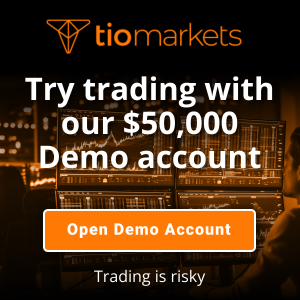Contango: Explained | TIOmarkets
BY TIOmarkets
|กรกฎาคม 2, 2567In the world of trading, there are many terms and concepts that traders need to understand to navigate the market effectively. One such term is 'Contango'. Contango is a situation in the futures market where the futures price of a commodity is higher than the spot price. It is a term that is used frequently in the commodities market, and understanding this concept can be crucial for traders. This glossary article will provide a comprehensive explanation of Contango, its implications, and its role in trading.
Contango is a term that originated in the mid-19th century and is derived from the London Stock Exchange. It is a situation that arises when investors are willing to pay more for a commodity in the future than its actual price. This article will delve into the intricacies of Contango, its causes, its impact on trading strategies, and how traders can benefit from understanding this concept.
Understanding Contango
Contango is a term used in the futures market to describe a situation where the futures price of a commodity is higher than the spot price. This situation typically arises when the cost of storing a commodity is high, or when there is an expectation of price increase in the future. It is a normal situation in a healthy market, and it is a sign that the market expects the commodity's price to rise over time.
Contango can be seen as a form of market sentiment. When the market is in Contango, it indicates that traders expect the price of the commodity to rise in the future. This expectation can be due to various factors, such as supply and demand dynamics, geopolitical events, or changes in economic indicators.
Spot Price vs. Futures Price
The spot price of a commodity is the price at which it can be bought or sold for immediate delivery. On the other hand, the futures price is the price at which the commodity can be bought or sold for delivery at a future date. The difference between the spot price and the futures price is known as the 'basis'.
In a Contango market, the futures price is higher than the spot price. This means that the basis is positive. The basis can be influenced by various factors, such as storage costs, interest rates, and expectations about future price movements.
Cost of Carry
The cost of carry is a key factor that influences the relationship between the spot price and the futures price. It includes the costs associated with storing and financing a commodity until it is delivered in the future. In a Contango market, the futures price needs to be high enough to cover the cost of carry.
For example, if a trader buys a commodity at the spot price and plans to sell it in the future, they would need to store the commodity and finance the purchase. The futures price needs to be high enough to cover these costs, otherwise, the trader would make a loss. This is why the futures price is typically higher than the spot price in a Contango market.
Implications of Contango
Contango has several implications for traders and the market as a whole. Firstly, it can affect the profitability of trading strategies. If a trader is long on a futures contract in a Contango market, they could potentially make a loss if the spot price does not increase by the time the contract expires.
Secondly, Contango can influence the shape of the futures curve. The futures curve is a graphical representation of the prices of futures contracts for different delivery dates. In a Contango market, the futures curve is upward sloping, indicating that futures prices are expected to rise over time.
Roll Yield
Roll yield is a concept that is closely related to Contango. It refers to the return that a trader can earn by rolling over a futures contract as it nears expiration. In a Contango market, the roll yield is negative. This is because the futures price for a later delivery date is higher than the price for an earlier delivery date.
For example, if a trader is long on a futures contract and the market is in Contango, they would need to sell the contract at a lower price and buy a new contract at a higher price. This would result in a negative roll yield, reducing the trader's overall return.
Contango and ETFs
Contango can also have an impact on Exchange Traded Funds (ETFs) that track commodities. These ETFs typically hold futures contracts, and they need to roll over these contracts as they near expiration. In a Contango market, this rollover can result in a loss for the ETF, which can affect its performance.
For example, if an ETF is tracking the price of oil and the oil market is in Contango, the ETF would need to sell its futures contracts at a lower price and buy new contracts at a higher price. This could result in a loss for the ETF, reducing its return and potentially causing it to underperform the spot price of oil.
Trading Strategies in a Contango Market
Understanding Contango can help traders to develop effective trading strategies. In a Contango market, there are several strategies that traders can use to potentially profit from the situation.
One strategy is to short futures contracts. If the market is in Contango and the trader expects the spot price to remain stable or decrease, they could potentially profit by shorting futures contracts. This is because the futures price is likely to decrease as the contract nears expiration, allowing the trader to buy back the contract at a lower price.
Spread Trading
Spread trading is another strategy that can be used in a Contango market. This involves buying and selling two related securities to profit from a change in the price difference. In a Contango market, a trader could potentially profit by shorting a near-term futures contract and going long on a longer-term futures contract.
This strategy is based on the expectation that the price difference between the two contracts will decrease. If the spot price remains stable or decreases, the price of the near-term contract is likely to decrease more than the price of the longer-term contract, resulting in a profit for the trader.
Arbitrage
Arbitrage is a strategy that involves taking advantage of price differences in different markets. In a Contango market, there could potentially be opportunities for arbitrage. For example, a trader could buy a commodity at the spot price and sell a futures contract at a higher price.
This strategy would require the trader to store and finance the commodity until the contract expires. However, if the futures price is sufficiently higher than the spot price to cover the cost of carry, the trader could potentially make a risk-free profit.
Conclusion
Contango is a crucial concept in the futures market. It is a situation where the futures price of a commodity is higher than the spot price, indicating that the market expects the price to rise over time. Understanding Contango can help traders to navigate the market effectively and develop profitable trading strategies.
While Contango can have implications for the profitability of trading strategies and the performance of ETFs, it also provides opportunities for traders. By understanding the dynamics of Contango, traders can potentially profit from shorting futures contracts, spread trading, and arbitrage.
Start Trading with TIOmarkets
Now that you understand the concept of Contango and its potential impact on your trading strategies, it's time to put your knowledge into action. Join TIOmarkets, a top rated forex broker, and access a world of trading opportunities across Forex, indices, stocks, commodities, and futures markets. With over 170,000 accounts opened in more than 170 countries, we provide you with the tools to trade over 300 instruments in 5 markets, all with low fees. Enhance your trading skills with our comprehensive suite of educational resources and step-by-step guides. Don't miss out on the chance to navigate the markets effectively. Create a Trading Account today and start your journey with TIOmarkets!

Risk disclaimer: CFDs are complex instruments and come with a high risk of losing money rapidly due to leverage. You should consider whether you understand how CFDs work and whether you can afford to take the high risk of losing your money. Never deposit more than you are prepared to lose. Professional client’s losses can exceed their deposit. Please see our risk warning policy and seek independent professional advice if you do not fully understand. This information is not directed or intended for distribution to or use by residents of certain countries/jurisdictions including, but not limited to, USA & OFAC. The Company holds the right to alter the aforementioned list of countries at its own discretion.
Join us on social media

Behind every blog post lies the combined experience of the people working at TIOmarkets. We are a team of dedicated industry professionals and financial markets enthusiasts committed to providing you with trading education and financial markets commentary. Our goal is to help empower you with the knowledge you need to trade in the markets effectively.